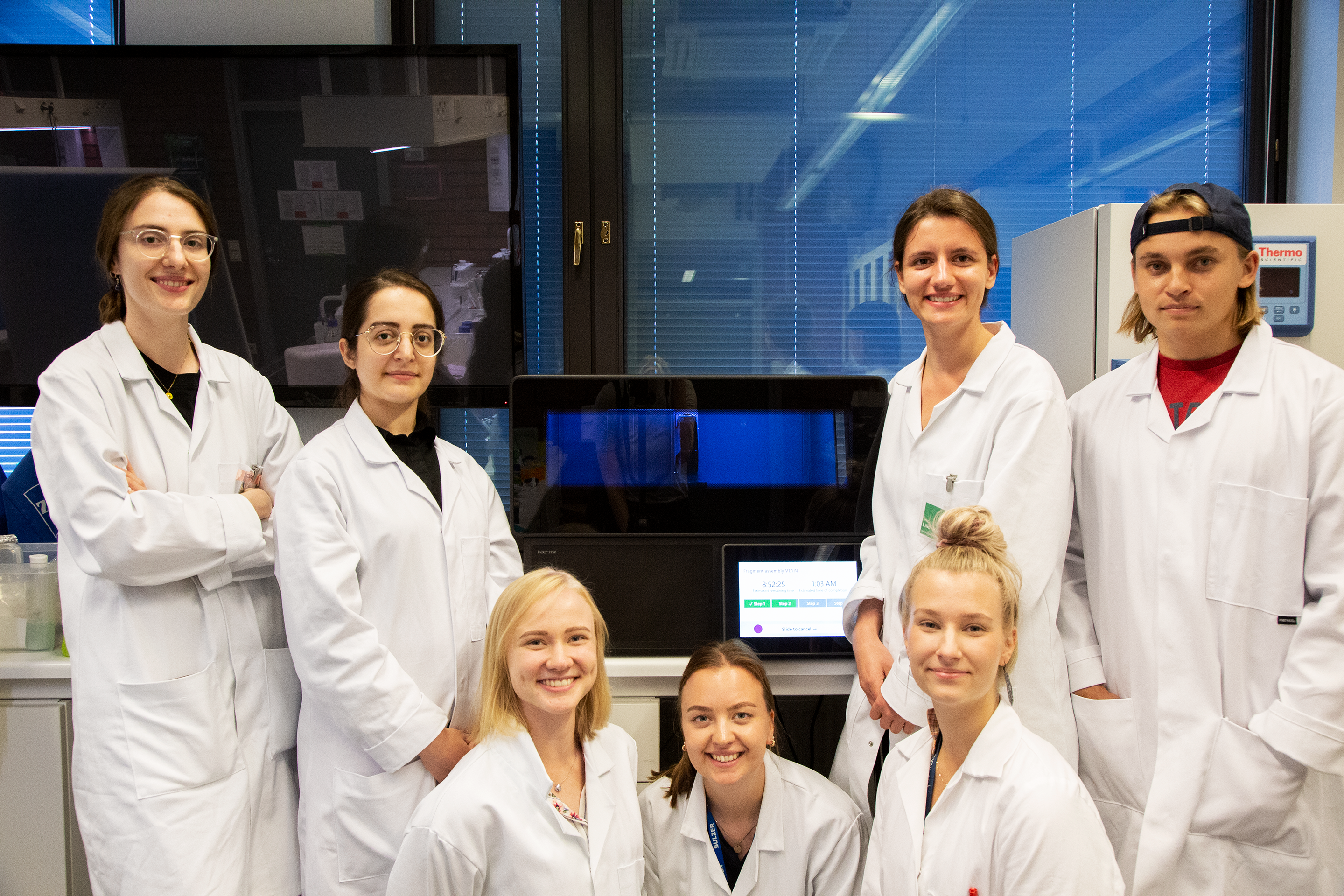Participating in the International Genetically Engineered Machine (iGem) competition is no easy feat. The competition, which focuses on synthetic biology, attracts teams from around the globe, providing a platform for students to showcase their ambitious and innovative projects.
The combined team from Aalto University and the University of Helsinki, under the leadership of Veera Kurki and Melissa Hendren, addressed a global issue: chronic wounds.
In the previous iGEM competition, the Finnish team had grand visions for their project. They had a great idea, an ambitious plan, and a lot of excitement for what they could achieve.

Their project, named QBlock, aimed to stop the formation of biofilm on chronic wounds by targeting the communication process between bacteria, a process known as quorum sensing. The team set out to create a library of DARPins, that work by binding to the signaling molecules produced by Staphyloccus epidirmitis, a type of bacteria found on the skin.
However, as with any scientific endeavor, things didn’t go exactly as planned. The team initially wanted to create large libraries of fragments, but the cost to complete all of the fragments that they had originally designed was prohibitive. The team hit another roadblock. They realized that manually creating the initial number of constructs was taking much longer than they had anticipated.
It was around that time that they learned about the BioXp® system and its ability to synthesize DNA fragments and automate the cloning process. They were able to use the BioXp instrument that belonged to Immuno Diagnostic – a Finnish distributor of biotech instruments – and with the help of Telesis Bio, the iGEM team installed the instrument in their lab until they were able to complete their project.
“The process of ordering the reagents and getting them to Finland was smooth, and once we had the machine installed, the fragments were synthesized and cloned overnight” – said Melissa, Team Co-lead.
The team purified the DNA obtained from the BioXp system, performed ribosome display, and sent the fragments for sequencing. They used a GFP-binding DARPin as a proof of concept and put some of the DARPins they had synthesized within that same mixture to see if there was competitive binding.
They confirmed that the workflow was working by identifying the DARPins that were binding to the target molecule. They continued with further experiments to optimize and test the activity of the identified DARPins.

The team’s hard work paid off in the end, as they were able to present their project at the iGEM competition and received positive feedback from the judges, who noted that the project was interesting, ambitious, and innovative.
The team’s experience at the iGEM competition is a great example of the challenges and triumphs that come with scientific research. The team encountered obstacles, but they were able to adapt, overcome and achieve their goals.
They also gained hands-on experience with cutting-edge technology, and learned valuable skills in time management and adaptability. Their success story is an inspiration to other young scientists and researchers, and a reminder of the importance of support and collaboration in achieving success in the field of synthetic biology.
As new participants embark on their journey towards a new iGEM competition from Nov 2nd to Nov 5th, 2023 Telesis Bio is sending a shoutout to all. Best of luck to each one of you!
To learn more about how Telesis Bio is empowering researchers with the tools to build biology in their laboratory, without any constraints, visit our website: www.telesisbio.com.